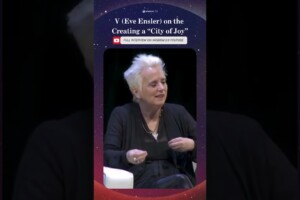
If you want to practice meditation, you should check out the NY Times’s article titled “How to Meditate.” In this piece, Chris Hedges talks about the threat to social stability that threatens to destroy meditation. Institutionalized robot greed and human sacrifice are two of the many threats that are threatening social stability. He makes some compelling points that will make you reconsider the benefits of meditation. But how do you start?
Calm
If you’re looking for a free way to meditate, consider the Calm app. The app offers tons of useful meditations that can be practiced anytime, anywhere. It offers many of the same benefits as the paid versions. This app is a one-stop-shop for your mental health, teaching you how to decrease anxiety, relax, and sleep better. However, if you’re suffering from depression, anxiety, or other mental health problems, you should consider a counselor.
The Calm app offers a variety of soundscapes to choose from. It includes hundreds of curated soundtracks, categorized into six categories. The background music plays when you scroll through the app, and you can customize the volume, and you can listen to ambient sound from a campfire or aquascape. The app also features Calm Masterclasses taught by mindfulness experts. Calm offers meditations ranging from 3 minutes to 30 minutes.
There are several ways to practice Calm meditation. There are introductory videos available for free, as well as paid subscriptions. Many Calm Masterclasses have educational elements, too, including children’s offerings. Children are particularly well-served with Calm’s courses, which help them learn to use their innate resources to combat stress and anxiety. One 2016 study found that children who received mindfulness instruction improved psychological functioning and reduced the symptoms of trauma.
Headspace
If you’ve ever wondered how to meditate, Headspace has an app for you. Founded by Andy Puddicombe, this app offers a guided meditation that is both easy to use and very informative. The app also has an easy-to-follow map so you can track your progress. The app will even track your progress and reward you for making healthy lifestyle choices. A bonus: you can buddy up with a friend and share your journey together. Headspace also provides audio recordings of meditation sessions.
The app features guided meditations with soothing music, as well as cues for external sounds. You can download a two-week free trial to try the app, or pay a subscription to gain access to hundreds of guided meditations. A subscription costs $70 a year, but you can get a free trial and continue using the app. If you’re already committed to meditation, try the free version, which includes beginner guides.
While the app is free to download, it’s also very popular among many people. Its app features hundreds of meditations that can help you improve your sleep, deal with anxiety, and generally live a happier life. The app also features an informative newsletter and podcast. It is worth checking out! You can also download the app for free on the iOS or Android store. This is the best app for beginners to try meditation.
Inscape
For those unfamiliar with the concept, Inscape is a new studio in the Flatiron District that specializes in immersive meditation experiences. The studio’s founder, Khajak Keledjian, became a serious meditator in 2007 and took the concept of mix-and-match into architecture. His designs for the studio’s meditation spaces are inspired by the simplicity and elegance of the Intermix brand. The space is open Monday through Friday from 7:45 a.m. to 9 p.m., Saturday and Sunday from 10:00 a.m. to 5:00 p.m.
Inscape offers a variety of meditation styles, from guided meditations to mindfulness exercises. Each session lasts from 22 to 88 minutes and consists of guided audio sessions led by a woman with a hard-to-place accent. It’s a great option for busy people with busy schedules and can be easily fit into your daily routine. Inscape’s guided meditation sessions are easy to follow and don’t take up a lot of time.
Besides offering a subscription-based program, Inscape also offers a mobile app that helps users meditate anywhere, anytime. The app’s logical steps to meditation build your practice. Once you’ve mastered the basics, you can progress to the next level. With the help of this app, you can get a deeper understanding of your own body and mind. You can also choose between guided meditations and sound baths, which will help you achieve your wellness goals.
Occupy Movement fan
Occupy is a term you’ve likely heard a few times, but you may not have been familiar with the concept. This movement started four months ago and has since spread to more than 1,500 cities worldwide. Adbusters, a Canadian activist group, started the movement four months ago, and it has quickly exploded to popularity. The name “Occupy” is short for “occupy,” which means “occupy” in Latin.
War on Drugs fan
A decade ago, War on Drugs were a darling of the indie rock scene. Their melodic fuzz appealed to the sensibilities of older listeners, and the band’s music won over a largely adolescent audience. The band has achieved more than 99% of its peers, including critical acclaim and major-label support, and is still beloved by enough fans to headline festivals and fill Madison Square Garden. The question is, how did they do it?
War On Drugs has written songs especially for long highway journeys, which often lead to crystalline rushes and intense tensions. Songs from the eponymous album Lost in the Dream are a prime candidate for fan meditation. And their songs have been largely successful in making long journeys worthwhile. The lyrics speak of a time-traveling mania, while the music evokes a feeling of adventure, longing, and adventure.
War On Drugs’ songs are not for purists, and are often akin to archetypal Americana iconography. Their music straddles the classics, but the band makes a point of mixing old school songwriting discipline with studio-scientist atmospherics. The aptness of their lyrical and instrumental compositions can be summed up in their ability to exhume and warp the canon.
Practicing meditation on your own
Practicing meditation on your own is a great way to get the benefits of the practice without having to completely detach yourself from your normal life. You can incorporate the techniques into your daily routine and find a sense of peace and rejuvenation. Here are a few tips for practicing meditation on your own. Practicing meditation on your own is easy! The first step is to decide what you want to accomplish. Then, try to set aside a certain amount of time each day for meditation.
Practicing meditation on your own can be difficult if you have no prior experience. It may involve trial and error. In addition to learning the meditation technique on your own, you may also experience different experiences that you do not understand. If you don’t feel comfortable with any of these scenarios, it may be helpful to take a meditation class or attend a meditation retreat. You’ll learn new techniques and improve your overall well-being.
Practicing meditation on your own will also allow you to practice mindfulness meditation. This type of meditation involves paying attention to a single object and letting distracting thoughts pass by. Mindful meditation, on the other hand, focuses on awareness of thoughts as they come and go without judging or worrying about them. Both methods of meditation can help you improve your ability to cope with stress and anxiety. Practicing meditation on your own will also improve your general health and reduce stress levels.
Did you miss our previous article…
https://quietmeditations.com/how-to-use-walking-as-meditation/





